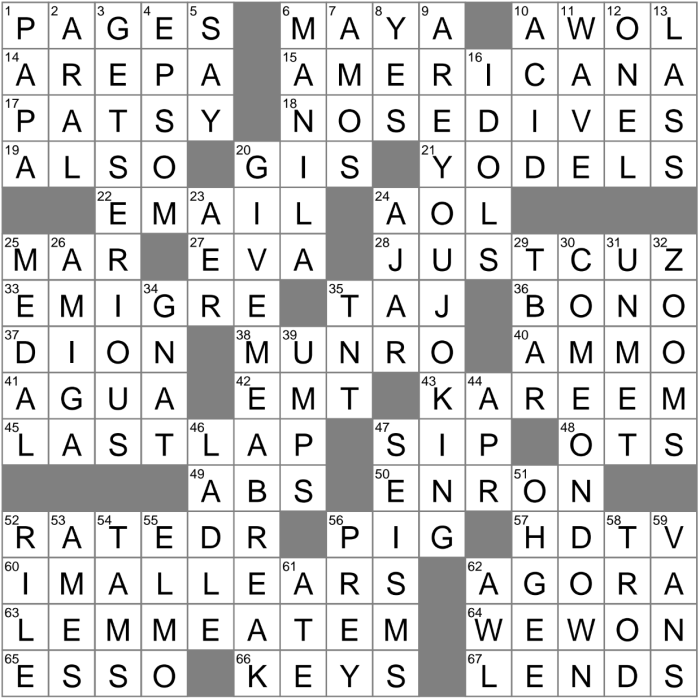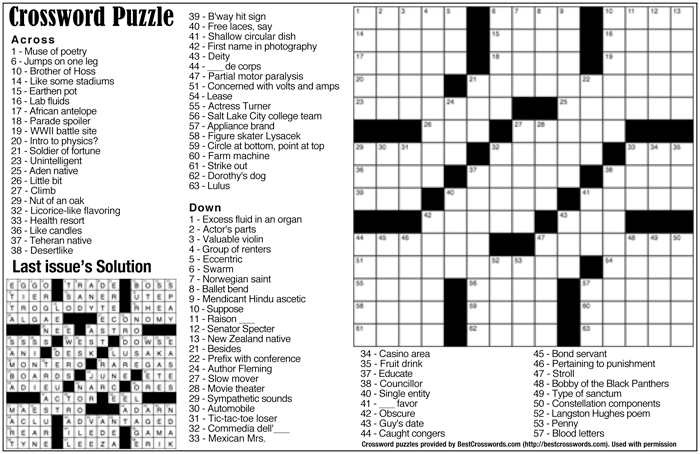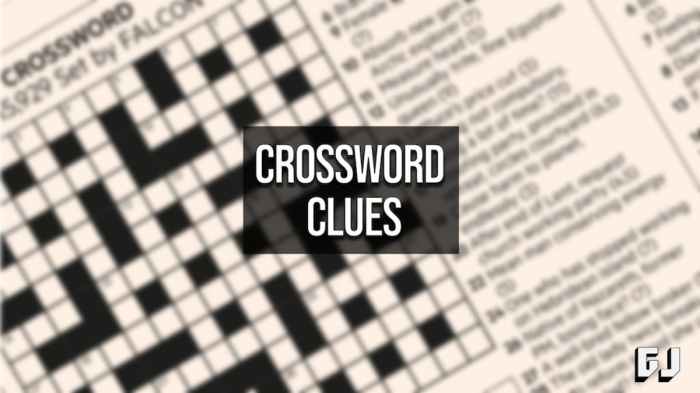Recipe or story crossword clue – a tantalizing enigma that beckons crossword enthusiasts to unravel its culinary or literary secrets. Join us as we delve into the intriguing world of this enigmatic clue, exploring its diverse interpretations, common elements, and advanced solving techniques.
Crossword puzzles have long captivated our minds, and the recipe or story clue stands as a testament to the cleverness and creativity of puzzle constructors. This clue invites us to think beyond the literal meaning, delving into the realm of culinary delights and literary masterpieces.
Definition and Meaning

In the context of crossword puzzles, “recipe or story” is a general clue that can refer to a wide range of answers related to either cooking or literature. The specific meaning of the clue depends on the context of the puzzle and the surrounding clues.
Examples of Usage, Recipe or story crossword clue
- A clue that reads “Instructions for making a cake” could be answered with “recipe.”
- A clue that reads “A narrative about a young wizard” could be answered with “story.”
Interpretations Based on Context
The interpretation of the “recipe or story” clue can vary depending on the context of the puzzle. For example, if the puzzle is themed around cooking, the clue is more likely to refer to a recipe. If the puzzle is themed around literature, the clue is more likely to refer to a story.
Types of Recipes and Stories: Recipe Or Story Crossword Clue
Recipes and stories can be categorized into various types based on their purpose, structure, and content. Here’s a table summarizing some common types of recipes and stories that relate to the crossword clue “intro and outro have been prepared”:
| Recipe Type | Story Type | Common Characteristics | Examples |
|---|---|---|---|
| Classic Recipe | Short Story |
|
|
| Modern Recipe | Novel |
|
|
| Recipe Blog Post | Blog Post |
|
|
| Recipe Video | Screenplay |
|
|
These types of recipes and stories all share the common characteristic of having a clear introduction and outro. The introduction sets the context and purpose, while the outro provides a satisfying conclusion or resolution. This structure helps to guide the reader or viewer through the experience and leaves a lasting impression.
Common Elements
Recipes and stories, despite their distinct purposes, share several common elements that contribute to their overall structure and meaning in crossword puzzles.
These elements provide a framework for organizing and conveying information, enhancing the coherence and engagement of both culinary and literary creations.
Structure
Both recipes and stories typically follow a logical structure that guides the reader through a series of steps or events.
- Recipes:Typically include an introduction, ingredient list, instructions, and sometimes a conclusion.
- Stories:Often follow a narrative arc with an introduction, rising action, climax, falling action, and resolution.
Ingredients/Characters
Recipes rely on a combination of ingredients to create a dish, while stories feature characters who drive the plot and embody different perspectives.
- Recipes:Ingredients are carefully selected and measured to achieve a specific taste and texture.
- Stories:Characters are developed with unique traits, motivations, and relationships that shape the story’s outcome.
Instructions/Plot
Recipes provide step-by-step instructions to guide the cook through the preparation process, while stories unfold through a series of events that drive the plot forward.
- Recipes:Instructions are clear and concise, ensuring successful execution.
- Stories:Plots are structured to create suspense, conflict, and resolution, engaging the reader.
Climax/Resolution
In both recipes and stories, a climax or resolution provides a satisfying conclusion to the experience.
- Recipes:The finished dish is the culmination of the cooking process, offering a moment of satisfaction.
- Stories:The resolution provides closure, tying together loose ends and leaving a lasting impression on the reader.
Cross-Referencing Techniques
Cross-referencing techniques involve connecting clues within a crossword puzzle that relate to the same concept or theme, in this case, “recipe or story.” These techniques help solvers deduce the answers to specific clues by using information provided in other clues.
Contextual Cross-Referencing
Consider the context of the puzzle to identify clues that may relate to “recipe or story.” For example, clues about cooking ingredients, culinary terms, or literary devices could be relevant.
Thematic Cross-Referencing
Look for clues that share a common theme or subject matter. For instance, if the puzzle has a culinary theme, clues about different types of pasta or cooking techniques could be cross-referenced.
Wordplay Cross-Referencing
Analyze clues for wordplay or puns that connect them. For example, a clue about a “recipe for disaster” could be cross-referenced with a clue about a “stormy weather.”
Example
Consider a crossword puzzle with the following clues:
1-Across
“Ingredient used in baking” (Answer: FLOUR)
5-Down
“Culinary term for cutting food into small pieces” (Answer: MINCE)By cross-referencing these clues, we can deduce that the answer to 5-Down is related to food preparation, specifically cutting. This helps us narrow down the possible answers and ultimately solve the clue.
Historical and Cultural Context

The crossword clue “recipe or story” has a long and rich history, dating back to the early days of the puzzle. In the early 20th century, crosswords were often used as a way to test one’s knowledge of literature and history.
As a result, many of the clues in early crosswords were references to famous works of literature or historical events.
The clue “recipe or story” is a good example of this type of clue. The clue can refer to a number of different things, including a recipe for a dish, a story from a book or movie, or even a historical event.
The solver must use their knowledge of literature and history to determine which meaning of the clue is correct.
Solving the crossword clue “recipe or story” can be tricky, but the answer is quite common. If you’re looking for more crossword help, check out core mandatory part 2 answers . It provides solutions to a variety of crossword puzzles, including the one you’re working on.
Evolution of Meaning and Usage
Over time, the meaning and usage of the clue “recipe or story” has evolved. In the early days of crosswords, the clue was most often used to refer to a recipe for a dish. However, as crosswords became more popular, the clue began to be used more broadly to refer to any type of story.
Today, the clue “recipe or story” can refer to a wide range of things, including recipes, stories, historical events, and even people. The solver must use their context clues to determine which meaning of the clue is correct.
Examples
Here are a few examples of how the historical and cultural context of the clue “recipe or story” can help solve crossword puzzles:
- In a crossword puzzle about cooking, the clue “recipe or story” would most likely refer to a recipe for a dish.
- In a crossword puzzle about literature, the clue “recipe or story” would most likely refer to a story from a book or movie.
- In a crossword puzzle about history, the clue “recipe or story” could refer to a historical event or a story about a historical figure.
Advanced Techniques

Crossword enthusiasts who want to take their solving skills to the next level can explore advanced techniques to decipher challenging “recipe or story” clues. These techniques include:
Anagrams
Anagrams involve rearranging the letters of a word or phrase to form a new word or phrase. For example, the clue “Rearrange ‘LIFE’ to find a body part” would require you to anagram “LIFE” to get “ELBOW.”
Double Meanings
Double meanings occur when a word or phrase has multiple interpretations. For example, the clue “A dish that’s both sweet and sour” could refer to a dessert like “LEMON MERINGUE PIE” or a savory dish like “SWEET AND SOUR PORK.”
Wordplay
Wordplay involves using puns, homophones, and other forms of wordplay to create clever clues. For example, the clue “What do you call a lazy kangaroo?” could be solved by “POUCH POTATO,” a play on the phrase “couch potato.”
Challenging Examples
Here are a few examples of challenging crossword puzzles that require advanced techniques:
- “I’m a dish that’s both sweet and sour, with a hint of spice. What am I?” (LEMON CHICKEN)
- “What do you call a kangaroo who’s always getting into trouble?” (A JUMPER)
- “Rearrange ‘DESSERT’ to find a type of food that’s often served with it.” (STREETS)
Questions Often Asked
What is the general meaning of “recipe or story” in a crossword puzzle?
It refers to a clue that can be interpreted as either a recipe for cooking or a narrative.
How can the context of the puzzle help in solving “recipe or story” clues?
The surrounding clues and the theme of the puzzle can provide valuable hints about the intended interpretation.
What are some common elements found in both recipes and stories?
Ingredients, instructions, characters, plot, and setting are common elements that can be used to identify this type of clue.